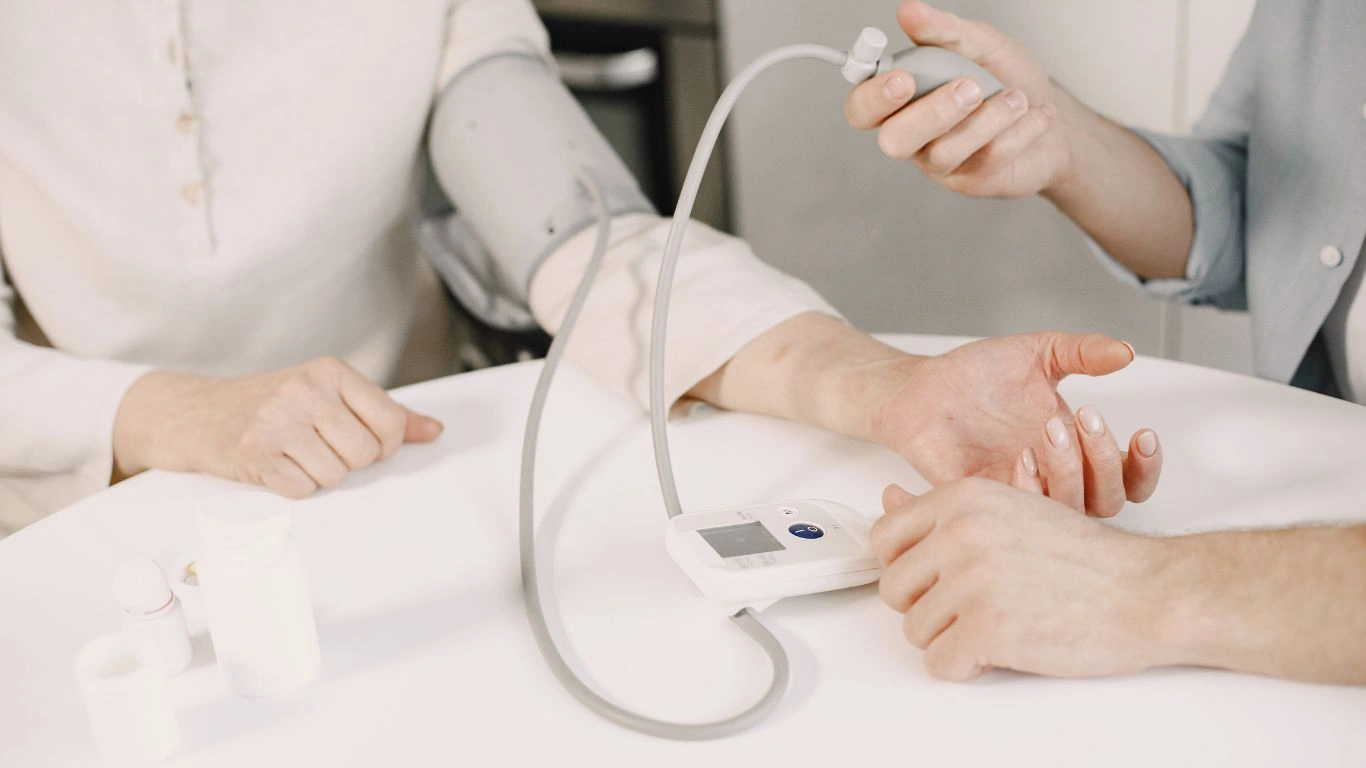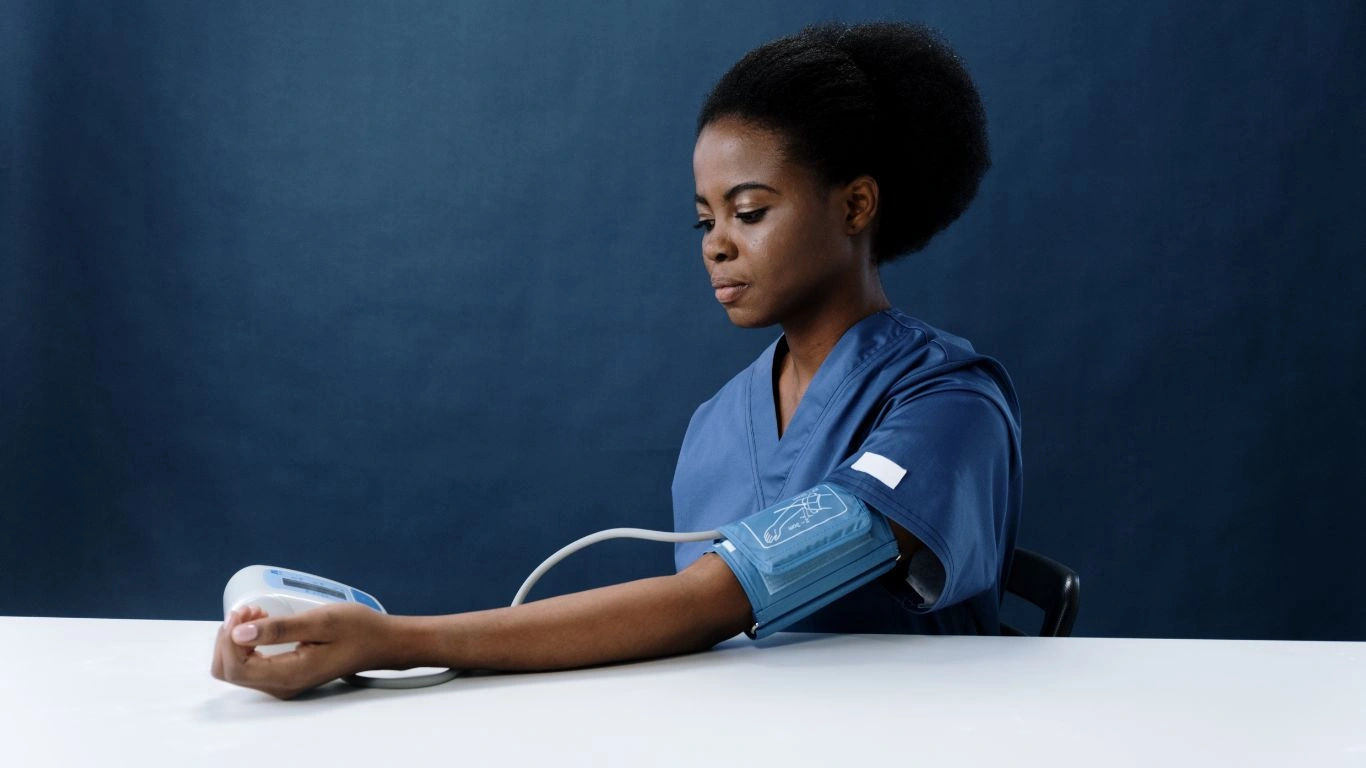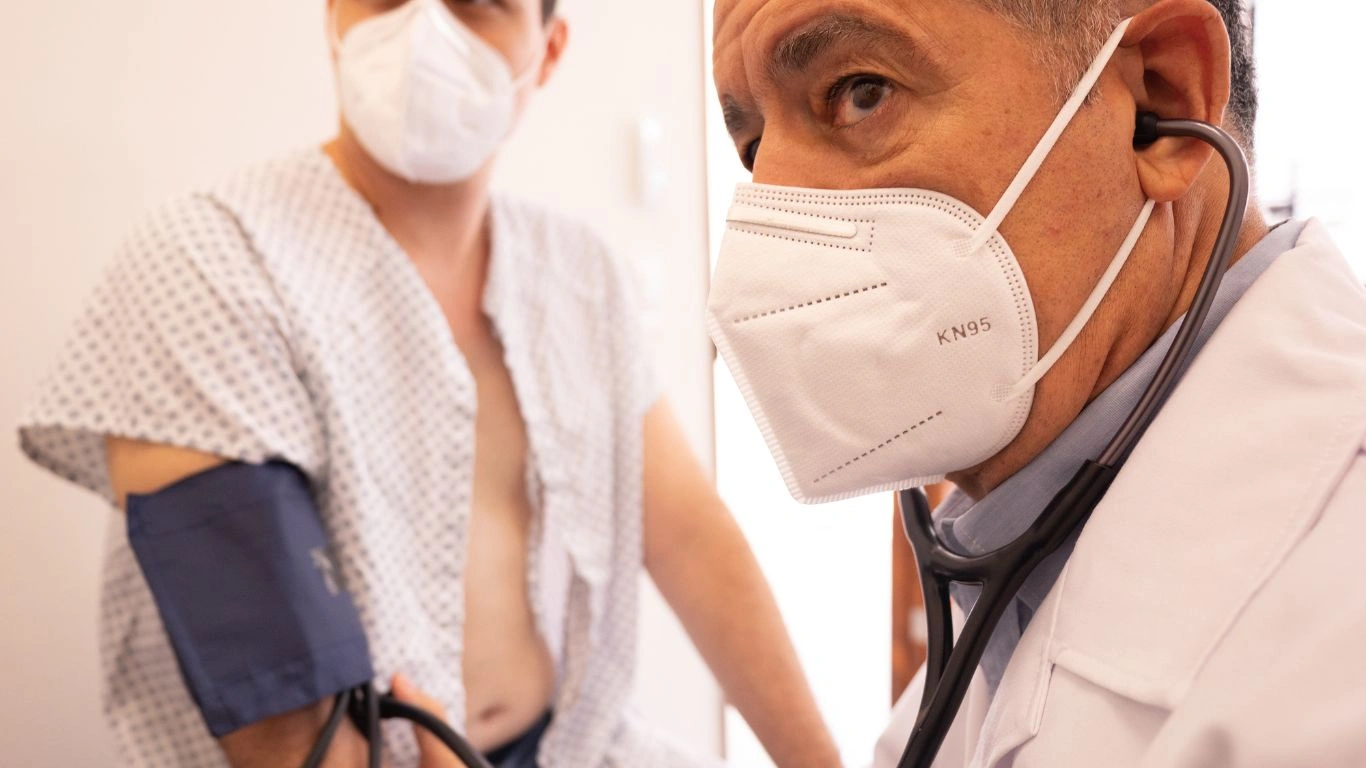Best Magnesium-Rich Snacks for Hypertension to Lower Blood Pressure Naturally
Managing high blood pressure isn’t just about prescription medications—trust me, I’ve been treating patients with hypertension for over a decade, and one of the most common questions I get is: “What can I eat to help control my numbers?” Well, let’s talk snacks. Not just any snacks, but the best magnesium-rich snacks for hypertension. This topic is close to my heart because magnesium is one of those underrated minerals that can truly make a difference. I’ve seen it firsthand in clinic—patients who dial in their diet, particularly their magnesium intake, often notice improvements not just in their blood pressure, but in their energy, sleep, and even stress levels.
Why Magnesium Matters for Blood Pressure Control

Magnesium acts like a natural calcium channel blocker—it helps relax blood vessels, which in turn lowers blood pressure. If you’re already taking blood pressure meds, adding more magnesium-rich foods might even enhance their effect. I often remind my patients that food isn’t just fuel—it’s medicine. That said, supplements are a popular go-to, but food sources are far better absorbed and come with a bundle of other nutrients your body will thank you for.
Now, let’s be honest—when that mid-afternoon snack craving hits, most of us aren’t reaching for kale or quinoa. That’s why having go-to magnesium-rich snacks in your pantry or lunchbox is such a game-changer. Let’s break down some of my favorites that I regularly recommend and personally enjoy.
Snack Smart: My Go-To Magnesium-Rich Picks

1. Pumpkin Seeds: The Tiny Powerhouses
If you haven’t gotten into pumpkin seeds yet, you’re missing out. Just a quarter cup of roasted, unsalted pumpkin seeds packs over 40% of your daily magnesium needs. They’re crunchy, satisfying, and ridiculously easy to sprinkle on yogurt, blend into smoothies, or munch on plain. I keep a stash in my white coat pocket—no kidding.
- Magnesium per 1 oz: Around 150 mg
- Pro tip: Go for raw or dry-roasted without added salt to avoid sodium spikes.
2. Almonds & Cashews: Nutty, Crunchy Goodness
These two are regulars in my snack rotation. Almonds are slightly lower in magnesium than cashews, but they also bring fiber and vitamin E into the mix. Cashews, meanwhile, are creamy and decadent—ideal for curbing sugar cravings.
- Almonds: About 80 mg per ounce
- Cashews: Roughly 75 mg per ounce
- Snack tip: A handful goes a long way—watch portions since they’re calorie-dense.
3. Dark Chocolate: Yes, You Can Indulge
Okay, let’s talk about the snack that makes my patients’ eyes light up—dark chocolate. The good kind (think 70% cacao or more) isn’t just a sweet treat; it’s legit heart-healthy. Besides being rich in antioxidants, it offers about 64 mg of magnesium per ounce. That’s a snack I don’t have to twist anyone’s arm to eat!
- Magnesium: ~60-70 mg per ounce
- Watch out: Some bars are high in sugar—check the label.
The Link Between Hypertension and Magnesium Deficiency

You’d be surprised how many patients with high blood pressure are also low in magnesium. It’s not usually tested in standard blood panels, so it can fly under the radar. Symptoms like muscle cramps, fatigue, or irritability? Often overlooked clues. In my experience, increasing dietary magnesium—not just from supplements but real, whole food—has led to noticeable improvements. I had one patient, let’s call him Joe, who swapped out chips for a trail mix with pumpkin seeds and almonds. Within three months, his systolic pressure dropped by almost 10 points. That’s the kind of progress we love to see.
What’s really important here is consistency. One magnesium-rich snack isn’t going to move the needle overnight, but building these options into your daily habits absolutely can. And I get it—life is busy, snacking is convenient, and we don’t always have time to plan out perfect meals. That’s why these snack ideas aren’t just healthy—they’re practical.
4. Avocado Toast… But Make It a Snack
Avocados are magnesium-rich and super versatile. Mash some on a slice of whole grain toast, sprinkle with sesame seeds or hemp hearts, and boom—snack magic. It’s also full of potassium and fiber, both of which play a big role in blood pressure control.
- Magnesium: Around 58 mg per avocado
- Tip: Add chili flakes or a squeeze of lemon for a flavor boost
5. Edamame: Underrated and Undeniably Good
This one’s a personal favorite I discovered while trying to mix things up with my own snacks. Edamame (steamed or lightly salted soybeans) is loaded with protein and magnesium, making it ideal for a satisfying and heart-friendly pick-me-up.
- Magnesium: About 65 mg per ½ cup
- Bonus: Also high in plant-based protein and fiber
Up next, we’ll get into how to incorporate these snacks without adding too many calories, and how to balance them with your current diet—especially if you’re on medications. But for now, start small. Keep a stash of nuts at your desk. Swap a cookie for a square of dark chocolate. These tiny changes really add up—and your heart will thank you.
How to Incorporate Magnesium-Rich Snacks Into Your Routine Without Overthinking It

Alright, so now that we’ve covered some of the best magnesium-rich snacks for hypertension, let’s talk real-life application. I get it—life is busy. Between patients, charting, and chasing after my own kids, I know firsthand how easy it is to default to whatever’s convenient (hello, vending machine). But when you’ve got the right snacks in reach, you’re way more likely to make better choices without even thinking about it.
Here’s the thing: you don’t need to overhaul your whole kitchen. Just have 2–3 magnesium-friendly options on hand at all times. It can be as simple as keeping a jar of roasted pumpkin seeds in your bag, or prepping individual bags of nuts and dried fruit over the weekend. I’ve found that when patients prep just a little, they’re way less tempted to grab salty chips or sugary granola bars.
Pairing Snacks for Balanced Blood Pressure Support
Another little trick I share with patients? Pair your magnesium-rich snacks with foods that support blood pressure in other ways—like potassium-rich fruits or fiber-heavy whole grains. These combos not only keep your blood pressure in check but also help you feel fuller longer, which means less grazing later on.
- Try this: Almonds + banana slices = a sweet and salty duo that’s loaded with magnesium and potassium.
- Or this: Avocado mash on a slice of whole grain toast with a sprinkle of hemp seeds. Boom—magnesium, potassium, and fiber in one delicious bite.
Snacks to Watch Out For: Hidden Sodium and Empty Calories

Now for the part no one likes to hear, but it needs to be said—some so-called “healthy” snacks are actually working against you. It drives me a little nuts (pun intended) when I see patients snacking on trail mixes loaded with candy or eating protein bars packed with sodium. Even something as innocent as a flavored yogurt can come with a side of 18 grams of added sugar.
Here’s my rule of thumb: if you can’t pronounce half the ingredients on the label, skip it. Real food doesn’t need a paragraph of fine print. And when it comes to hypertension, watching sodium intake is just as important as boosting magnesium. Many packaged snacks sneak in a surprising amount of salt, especially roasted nuts and seeds. Always check the label, and opt for “unsalted” or “lightly salted” versions.
Some Sneaky Sodium Offenders:
- Pre-packaged flavored nuts
- Crackers and veggie chips (yep, even the “organic” ones)
- Instant oatmeal packets
- Microwave popcorn
Does this mean you can never enjoy your favorite crunchy treat again? Of course not. I’m all about balance. But awareness is key, especially when you’re trying to manage blood pressure without adding more meds to your list.
Quick Magnesium-Rich Snack Combos for Busy Days

Let’s keep it simple. Here are a few snack pairings I recommend to my patients all the time—these take less than five minutes to throw together, don’t require fancy equipment, and they taste great. Plus, they’re loaded with nutrients that your heart will love.
- Greek yogurt + chia seeds + sliced banana – Magnesium + potassium + fiber = triple threat.
- Celery sticks + almond butter – Crunchy, satisfying, and heart-healthy.
- Roasted chickpeas + baby carrots – High in magnesium and fiber, with a satisfying crunch.
- Whole grain crackers + hummus + cucumber slices – Easy, refreshing, and blood pressure-friendly.
These combos aren’t just tasty—they’re strategic. Think of snacks as mini-meals, not just fillers. When they’re balanced and nourishing, they can stabilize your blood sugar, reduce cravings, and support your overall blood pressure goals. And yes, I’ve used all of these in my own hectic workday more times than I can count!
When Is the Best Time to Snack?
This might surprise you, but timing matters. I often recommend magnesium-rich snacks in the afternoon or early evening. Why? Because magnesium plays a role in muscle relaxation and nervous system regulation. A snack like edamame or a small banana with peanut butter can help you wind down and sleep better—another important piece of the blood pressure puzzle.
Also, if you’re taking medications like diuretics, which can deplete magnesium, spacing out your magnesium intake throughout the day helps maintain steady levels. It’s a subtle trick, but one that’s backed by both research and what I’ve seen clinically.
Final Thoughts on Staying Consistent (Without Getting Overwhelmed)
Here’s the honest truth: health doesn’t come from one perfect snack. It’s about the little choices, made consistently over time. I’ve had patients who felt completely overwhelmed at first, thinking they needed to eat like a wellness influencer just to bring their pressure down. But we kept it simple—just adding in a few magnesium-rich snacks daily—and their numbers started to shift in the right direction. And more importantly, they felt better.
So take this as your sign to stock up on pumpkin seeds, grab a dark chocolate bar (yes, the good kind), and prep a few snack packs this weekend. Your heart—and your future self—will thank you.
What to Look for on Nutrition Labels When Choosing Magnesium-Rich Snacks

Alright, so you’ve made the decision to stock up on better snack options—but now you’re staring at a wall of choices in the grocery store aisle, wondering which ones are actually helpful for your blood pressure. I’ve been there with patients (and even my own family), and one thing I always stress is: the nutrition label is your best friend.
Here’s how I break it down when I’m helping someone shop smarter:
- Magnesium content: Not all labels show this clearly, but if it’s listed, you’re aiming for at least 10–15% of your daily value (about 40–60 mg per serving).
- Sodium: Look for snacks with less than 140 mg per serving. Anything above that can easily add up across the day.
- Added sugars: Keep this as low as possible. Even “healthy” bars can sneak in 10–20 grams!
- Fiber: Bonus points if your snack has at least 3 grams per serving—fiber also supports heart health.
Trust me, once you get in the habit of flipping the package over, it becomes second nature. I’ve had patients come back after just a few weeks of mindful label-reading, totally shocked at how much better they feel—and often with a few pounds shed, too.
Best Store-Bought Magnesium-Rich Snacks (That Don’t Taste Like Cardboard)

Let’s be honest—sometimes you don’t have time to prep homemade snacks, and that’s okay. There are some solid packaged options that I often recommend to my patients. They taste good, are made with real ingredients, and fit right into a blood pressure-friendly lifestyle.
My go-to recommendations:
- RXBARs (especially the peanut butter flavor) – No added sugar, made with whole foods, and contains magnesium-rich nuts.
- That’s It. fruit bars – Literally just fruit, no junk. Pairs great with a handful of almonds or cashews.
- Seapoint Farms Dry Roasted Edamame – High in protein and magnesium, super crunchy and satisfying.
- Hu Dark Chocolate – Clean ingredients, low sugar, and rich in magnesium. A little square goes a long way.
- Simple Truth Pumpkin Seeds – Great for on-the-go snacking, plus a solid magnesium punch.
One of my patients told me she keeps a small basket in her pantry just for magnesium-rich options. That way, when she’s in a hurry, she doesn’t have to think—she just grabs from the “heart basket.” Honestly, I’ve started doing it myself. It’s those little systems that make healthy eating doable, even on chaotic days.
Magnesium, Blood Pressure, and Lifestyle—Connecting the Dots
Let’s zoom out for a second. While we’ve been deep in snack talk, it’s important to remember that nutrition is just one part of the blood pressure equation. Magnesium is a key piece, yes—but it works best when combined with the other basics: regular movement, good sleep, stress management, and staying hydrated.
When I first started working with hypertensive patients, I noticed a trend—those who added a couple magnesium-rich snacks but didn’t make other changes didn’t see as much progress. But those who paired better snacks with daily walks, improved sleep, and reduced processed foods? That’s when the blood pressure numbers started to move in a meaningful way. The key here is synergy.
Here’s how to build that synergy:
- Snack smart—obviously, we’ve got that covered now.
- Move daily—even a brisk 20-minute walk can lower BP.
- Cut sodium—opt for fresh foods when possible, and read labels closely.
- Manage stress—magnesium helps, but so does meditation, journaling, or just deep breathing.
- Hydrate—sometimes fatigue or lightheadedness is just dehydration in disguise.
I had a gentleman in his early 60s who was on two blood pressure medications, frustrated that his numbers were still high. We worked together on these simple daily changes—he started walking after dinner, added a handful of pumpkin seeds to his afternoon routine, and began using a breathing app before bed. Within two months, his BP improved enough that we adjusted his meds. And he felt empowered, which is half the battle.
References
Disclaimer
This article is for informational purposes only and is not a substitute for professional medical advice, diagnosis, or treatment. Always consult with your physician or a qualified healthcare provider regarding any questions or concerns about your health. The content here is based on my personal experience as a board-certified Internal Medicine physician and current clinical guidelines, but it should not be used to self-diagnose or self-treat any condition.

Dr. Gwenna Aazee is a board-certified Internal Medicine Physician with a special focus on hypertension management, chronic disease prevention, and patient education. With years of experience in both clinical practice and medical writing, she’s passionate about turning evidence-based medicine into accessible, actionable advice. Through her work at Healthusias.com, Dr. Aazee empowers readers to take charge of their health with confidence and clarity. Off the clock, she enjoys deep dives into nutrition research, long walks with her rescue pup, and simplifying medical jargon one article at a time.






